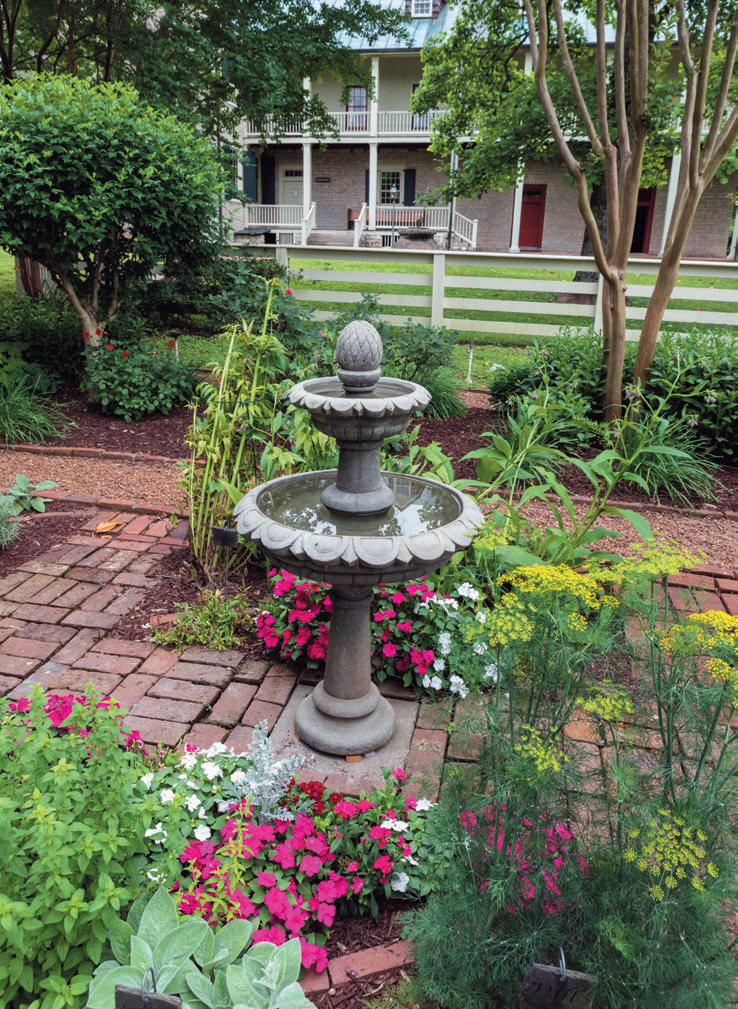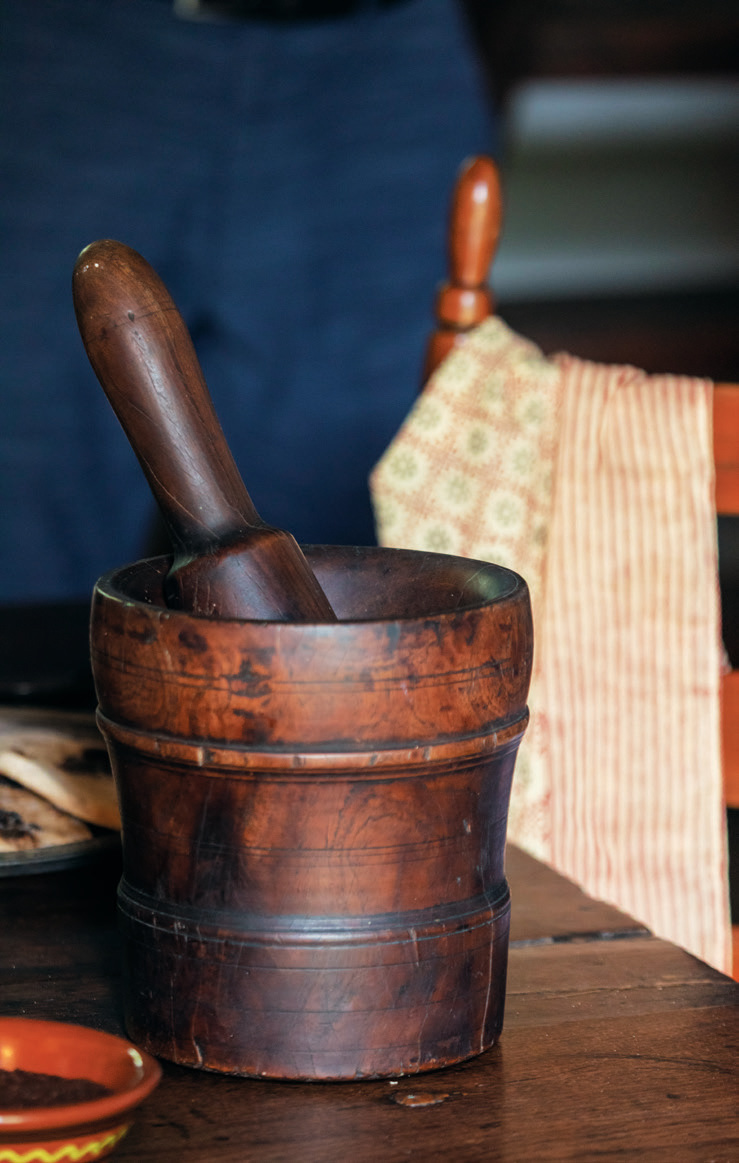If you stand in front of stately home Cragfont in Castalian Springs today, it’s almost hard to imagine that the first structure brothers James and George Winchester built on this land in the 1780s was a frontier fort. Fort Tuckahoe became home to families as well as a mill, sawmill and distillery.

By the early 1800s, the grand limestone home that still stands today had been built and occupied, and guests were being entertained on a frequent basis. The home was furnished with fine carpets and furniture crafted in the Eastern style found in the wealthy homes of Boston, Baltimore and Philadelphia. Some of this cherry furniture remains to this day, more visual evidence of a bygone era.
But Cragfont is more than a house and furnishings, which is what many people think of when they think of historic homes.
The story of the people
Among the stories you may hear told at Cragfont are that George Winchester lost his life to the Native Americans he’d helped displace and against whom he warred as a member of the militia; James Winchester was a planner of and investor in cities such as Memphis and the now-gone Cairo; how James’ firstborn son, Marcus, became the first mayor of Memphis; and there’s a connection between Cragfont and nearby Wynnewood since Almira, the daughter of James and Susan Winchester, grew up at Cragfont and then was a wife and mother at Wynnewood.
More than a century and a half after Cragfont was built, the story turns to preservationist Ellen Stokes Wemyss. On Jan. 31, 1952, the Sumner County Chapter of the Association for the Preservation of Tennessee Antiquities (APTA) was established. Under the leadership of Wemyss, the APTA started talking about taking on Cragfont as a project in June 1956 and the need for the Tennessee Historical Commission to purchase and save the property from further deterioration.
In 1957 the Tennessee State Legislature authorized the purchase of Cragfont, which was announced as complete in December 1958. Soon after, under the continued leadership and influence of Wemyss, the Sumner County APTA headed the restoration effort of the home, which opened as a museum in April 1961.

In the 1990s management of Cragfont State Historic Site transferred to Historic Cragfont Inc., which operated the site until the founding of Historic Castalian Springs in January 2020 — merging management of Cragfont, Wynnewood and Hawthorn Hill State Historic Sites.
“We have a lot of really dynamic stories to tell,” says Tonya Staggs, executive director of Historic Castalian Springs, the organization that operates Cragfont and two other area historic homes, Wynnewood and Hawthorn Hill. “We have a wealth of resources — letters and diaries of the people who lived here. Being able to feel connected to the people who lived here more than 200 years ago makes the structure feel alive.”
Staggs and her staff don’t shy away from telling the full truth about the first family of Cragfont. Under Staggs’ leadership, efforts have been undertaken to tell the stories of Native peoples who were illegally displaced by White settlers such as the Winchesters as well as the enslaved people who were bought, sold and forced to labor by the family.

Staggs, who was with Travellers Rest in Nashville for 18 years and served as its education director, had experience there developing the exhibit on slavery.
“It was really important to me when I came here to explore that part of the site’s history and have more inclusive programming,” Staggs says.
The ongoing research into this aspect of Cragfont as well as the other sites managed by Historic Castalian Springs doesn’t just stop at documents. Staggs said that staff recently accompanied an area African American resident to a reported gravesite deep in the woods. This is reportedly the final resting place of a person who was enslaved at Cragfont. The staff is also trying to connect with the descendants of the approximately 30 slaves who lived and toiled at Cragfont.
“It’s a lot of people’s stories that haven’t been told,” she says. “We are constantly updating the information.”
Unprecedented challenges

The three homes that are managed by Historic Castalian Springs used to operate independently. In January 2020, the three merged operations under one organization. And then the pandemic hit.
“We had to rethink everything,” Staggs says. “But being closed gave us an opportunity to revamp our tours and programs and train new staff.”
Cragfont normally is open April through October of each year with additional Christmas season tours, but during the early part of the pandemic, indoor tours weren’t possible. Staggs and her staff, however, used the unique situation to focus on the exterior offerings of the property.
“We reopened with landscape tours in July 2020,” she says. “These had a mixed reaction. Many people wanted to tour the home since historic house museums usually focus on the interior, but the people who took our landscape tours loved them.”
Among the outside points of interest is the fantastic garden based on the original one used by the Winchester family. There is also a cemetery on the property, for which there is a free guidebook available, as well as a smokehouse.
Even now that the home is open for tours, staff members offer periodic history hikes on Cragfont’s 30 acres. These are announced on the social media accounts and website and are free to museum members and $5 for nonmembers.
Special events

Cragfont’s best-attended event each year is actually its Gala at Cragfont fundraiser, which is Saturday, Aug. 27, this year. Beyond that, the most popular public event is Haunts at the Font during the Halloween season, to be held Saturday, Oct. 15, this year. Costumed characters based on real people tell spooky stories from the past. These in-character tale-tellers include Big Foot Spencer, an early frontiersman. This event, limited to slightly fewer than 300 guests, sells out quickly.
Among the special tours offered at Cragfont are the periodic Hidden History behind-the-scenes events that take registered visitors to areas that aren’t on the typical house tours — the cellar and attic among them. The remaining such tours for 2022 are set for Sept. 24 and Oct. 1, both Saturdays.
Though Cragfont closes for the season at the end of October because the building is not heated, Christmas tours are offered beginning the weekend after Thanksgiving. It was with the Christmas season of 2020 that home tours resumed. Staggs says that because of the lack of heating, registered attendees are urged to bundle up. But perhaps the cold just gives those holiday season tours that extra bit of 19th-century authenticity.



